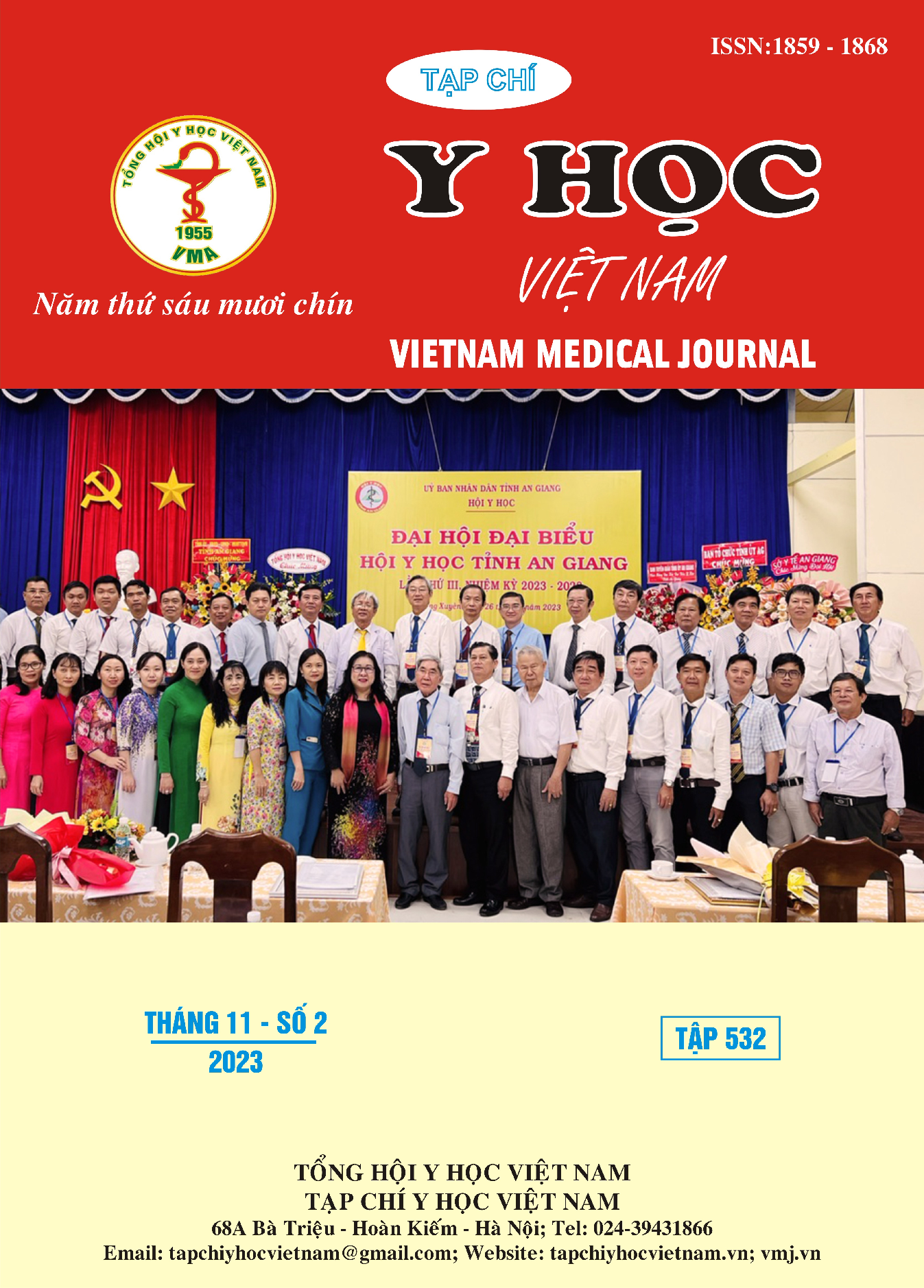ĐẶC ĐIỂM LÂM SÀNG VÀ KẾT QUẢ ĐIỀU TRỊ NHIỄM NẤM CANDIDA XÂM LẤN TẠI KHOA SƠ SINH VÀ HỒI SỨC SƠ SINH BỆNH VIỆN NHI ĐỒNG 2
Nội dung chính của bài viết
Tóm tắt
Mục tiêu: Mô tả đặc điểm lâm sàng, cận lâm sàng và kết quả điều trị trẻ sơ sinh NN Candida xâm lấn. Đối tượng và phương pháp nghiên cứu: Nghiên cứu loạt ca, dữ liệu thu thập hồi cứu, tiến cứu trên tất cả trẻ NN Candida xâm lấn, điều trị tại Bệnh viện Nhi Đồng 2 từ ngày 11/04/2021 đến ngày 15/06/2023. Kết quả: Có 104 trẻ nhiễm Candida xâm lấn với 106 đợt NN trong thời gian nghiên cứu. Tuổi thai có trung vị 31,0 tuần [27,0; 36,0 tuần], cân nặng non tháng có trung vị 1400 g [1050; 2475], ngày tuổi bắt đầu NN 24,5 ngày [17,0; 39,3]. Triệu chứng lâm sàng và cận lâm sàng phổ biến là rối loạn tri giác, bụng chướng, nhẹ cân, da tái, sốt; tăng CRP và giảm tiểu cầu, giảm bạch cầu. Loài Candida thường gặp nhất là C. parapsilosis (44,3%), kế đến là C. albicans (32,0%), đồng nhiễm vi trùng trong đợt NN là 29,8%. Bệnh lý nền phổ biến nhất là nhiễm trùng huyết do vi trùng 41,3%, bất thường bẩm sinh đường tiêu hóa 31,7%. Yếu tố nguy cơ NN phổ biến nhất là dùng nhiều kháng sinh trước đó 100%, nuôi ăn tĩnh mạch 90,4%, kế đến là hiện diện CVC 70,2%. Điều trị với amphotericin B tỷ lệ cao nhất 59,6%, kết hợp amphotericin B và fluconazole là 34,6%. Tỷ lệ tử vong thô là 35,6%. Kết luận: Tỷ lệ tử vong trẻ sơ sinh NN Candida xâm lấn còn cao. Điều trị chủ yếu là đơn trị liệu với amphotericon B. Các yếu tố nguy cơ NN chiếm tỷ lệ khá cao, cần thêm nghiên cứu tìm ra mối liên quan độc lập đến kết cục tử vong.
Chi tiết bài viết
Từ khóa
nhiễm Candida, sơ sinh.
Tài liệu tham khảo
2. Giang TB. Đặc điểm dịch tễ học lâm sàng nhiễm nấm ở trẻ sơ sinh và hiệu quả điều trị dự phòng bằng Fluconazole trên trẻ đẻ non. 2021;
3. Barton M, Shen A, O’Brien K, et al. Early-onset invasive candidiasis in extremely low birth weight infants: perinatal acquisition predicts poor outcome. 2017;64(7):921-927.
4. Chen YN, Hsu JF, Chu SM, et al. Clinical and Microbiological Characteristics of Neonates with Candidemia and Impacts of Therapeutic Strategies on the Outcomes. Journal of fungi (Basel, Switzerland). Apr 29 2022;8(5)
5. Agarwal RR, Agarwal RL, Chen X, Lua JL, Ang JY. Epidemiology of Invasive Fungal Infections at Two Tertiary Care Neonatal Intensive Care Units Over a 12-Year Period (2000-2011). Global pediatric health. 2017;4:2333794x17696684.
6. Makhoul IR, Kassis I, Smolkin T, Tamir A, Sujov P. Review of 49 neonates with acquired fungal sepsis: further characterization. Pediatrics. Jan 2001;107(1):61-6.
7. Saiman L, Ludington E, Dawson JD, et al. Risk factors for Candida species colonization of neonatal intensive care unit patients. The Pediatric infectious disease journal. Dec 2001;20(12):1119-24.
8. Dương Tấn Hải, Huỳnh Thị Duy Hương. Đặc điểm nhiễm nấm candida huyết ở trẻ sơ sinh tại bệnh viện Nhi đồng 2 từ tháng 10-2004 đến tháng 12-2005. Tạp chí y học TP Hồ Chí Minh. 2007; Tập 11, số 1.


